Black Minnesota Police Chief Forced To Apologize For Posting Thin Blue Line Symbol
>
A Minnesota police chief was forced to apologize for posting an image of a “thin blue line” flag on his department’s Facebook page last week, after it community members aired complaints labeling the symbol as representing ‘extremist views’.
The flag, a black and white version of the American flag with a blue stripe just below the stars, depicts men and women dressed in blue as a line between law and order.
However, more recently, the symbol has been considered divisive to some, as its meaning has changed from one of non-partisan support to one synonymous with the far right and even white supremacists
The symbol later sparked outrage when appeared in a Jan. 9 social media post from the Golden Valley Police Department as the force celebrated National Law Enforcement Appreciation Day.
After being urged to remove the post, Green wrote in a follow-up post last week that the image was intended as a token of appreciation to his 21 officers, and that his message had been misinterpreted by citizens who, they reportedly called to complain.
Golden Valley Police Chief Virgil Green was forced to apologize for posting an image of a “thin blue line” flag on his department’s Facebook page last week, after a community member filed a complaint labeling the symbol as a representation of “extremist views”.
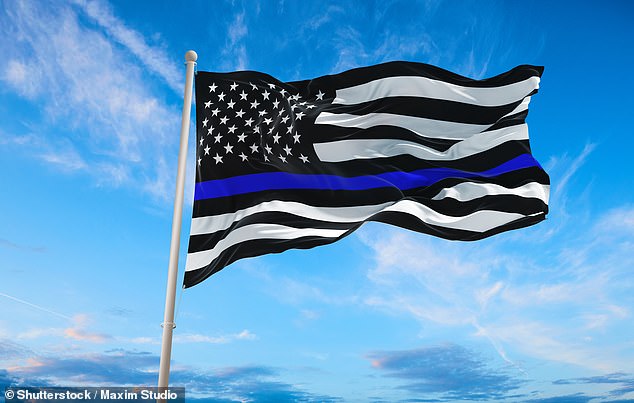
The flag, a black and white version of the American flag with a blue stripe just below the stars, depicts men and women dressed in blue as a line between law and order.
Despite this, the chief, the city’s first black police chief, acknowledged that the flag had offended some and could therefore be considered offensive.
With this in mind, Green, who was hired months ago as part of a city effort to address alleged racism in the department, has apologized profusely for posting the seemingly innocuous symbol.
“For many, the thin blue line of the flag has always represented a way to honor the commitment we make as first responders to protect our community,” Green wrote in an online post written for the community’s roughly 22,000 residents last week. .
“It is disappointing that in recent years the positive intent of the flag has been clouded with nuance and divisive action,” the chief added.
‘We don’t want to promote these negative connotations.’
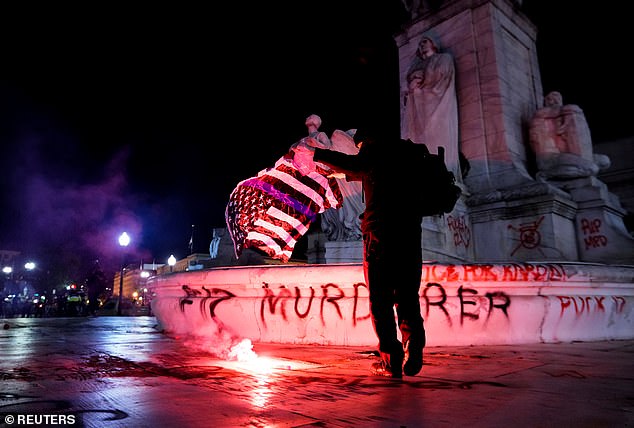
More recently, however, the symbol has been considered divisive by many, as its meaning has shifted from one of non-partisan support to one synonymous with the far-right and even white supremacists.
The apology came after the post was reportedly bombarded with comments on the post complaining about the use of the flag
Green, who began his tenure as chief last summer, said that while he considered the flag apolitical, he understood that might not be the case for all citizens of the Minnesota suburb.
“In the future, the Golden Valley Police Department will use images that do not cause unreasonable controversy between law enforcement and the public,” his apology post promised.
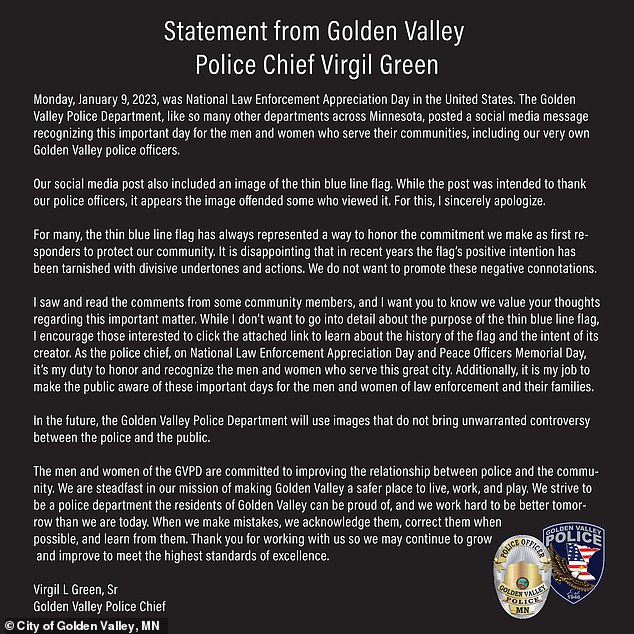
Despite this, the chief, the city’s first black police chief hired to address allegations of racism in the Minneapolis suburb, acknowledged that the flag had offended some and could therefore be considered offensive.
Formerly the head of an Oklahoma suburb outside Oklahoma City, Green broke in last September as part of a months-long effort to address racism in the small community.
Just weeks before Green’s Thin Blue Line was published, Golden Valley released the results of an extensive internal investigation into the city’s police department’s “anti-racist” efforts.
The investigation, conducted over the course of nine months by a private law firm in Minneapolis and completed in December, found that there had been resistance to efforts to instill non-racist ideology in officers on the force.
The tax dollar-funded investigation was conducted at the behest of Mayor Shep Harris and followed allegations of racism and officer misconduct that surfaced during the search for a new police chief.
That search culminated in the hiring of Green last summer.
The backlash against Green’s post, which defenders argued was simply a show of police pride and solidarity, is being portrayed as the Los Angeles Police Department chose to remove all images displaying the ‘thin blue line flag’ from their stations throughout the city.
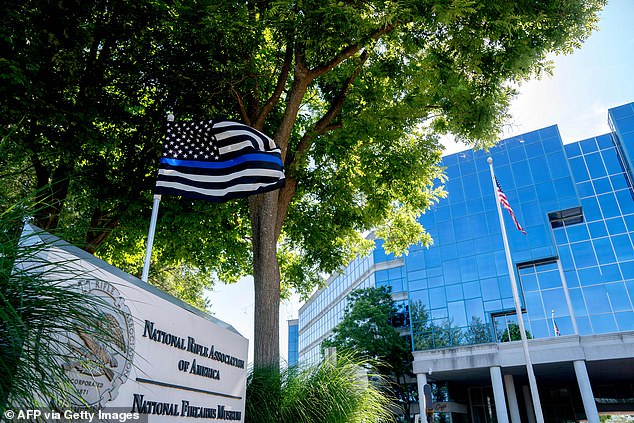
The backlash against Green’s post, which advocates argued was simply a show of police pride and solidarity, comes as the Los Angeles Police Department chose to remove all images depicting the ‘thin blue line flag’ of its stations throughout the city.

The tax dollar-funded investigation was conducted at the behest of Mayor Shep Harris and followed allegations of racism and officer misconduct that surfaced during the search for a new police chief.
The bans, which have been criticized by lawmakers and former officials, also came as a result of a complaint from a community member who insisted that the flag represents extremist views.
In an eerily similar statement to Green’s last week, Los Angeles Police Chief Michel Moore told the citizens of the City of Angels that while he sees the flag from a different perspective than the whistleblower, the Flag display in our public lobbies can be divisive.
“It is unfortunate that extremist groups have hijacked the use of the Thin Blue Line flag to symbolize their anti-democratic, racist and bigoted views,” Moore said.
‘Flags serve as powerful symbols with specific meanings. To me, the Thin Blue Line flag represents the honor, courage, dedication, and sacrifice of law enforcement to protect our communities.
“Tragically, that view is not universally shared and others have been able to persuade the public that it symbolizes racist, bigoted and oppressive values.”
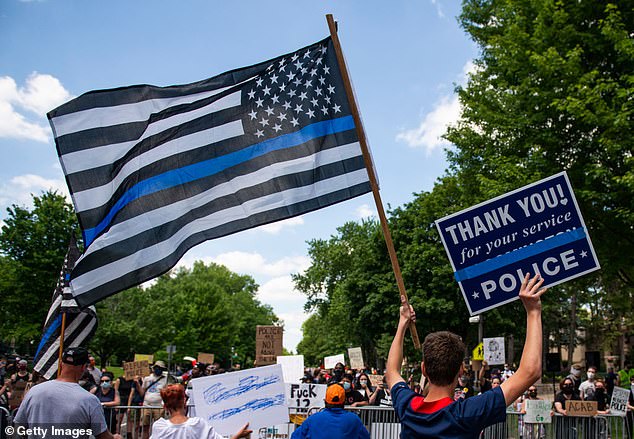
Green, who began his tenure as chief last summer, said that while he considered the flag apolitical, he understood that might not be the case for all citizens of the suburb.
Despite the change, the boss reiterated that employees and staff can still have images or objects displaying the thin blue line on their workspace, locker doors and service vehicles, as well as memorials to fallen officers.
Moore said: “Since our lobbies should be places where people feel safe, free from political ideology, and welcoming, it remains our longstanding policy that only official items be displayed.”
